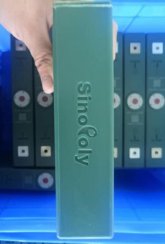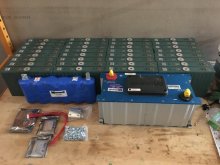Speaking generally, not specific to EVE or even specific to lifepo4 or batteries, there are many problems that don't necessarily show up until large numbers of people are using something over the long term in real world conditions. At that point correlations can begin to be drawn and potential defects, weaknesses, or underlying issues can be identified, and theoretical assumptions can be reassessed. Vehicle recalls would be a common example of this.
Add to this, the very limited amount of info available to us about grey market cells and why they are in the grey market in the first place, and why they can be bought and sold for pennies on the dollar. Its possible the resellers know the reason for the discount, its possible they do not, in either case they do not seem eager or willing to educate us on this aspect of the industry (with the exception of Seplos, who has put out some great and helpful content).
One thing I would point out about testing, neither us nor the resellers are equipped to do any extensive amount of testing, so while initial testing does provide some peace of mind and rough validation of quality, I wouldn't assign too much importance to the rudimentary tests we are capable of (or my own limited ability to interpret the results).
If I were to guess, I would imagine for basic,
stationary, low c-rate, energy storage applications, if a cell initially meets your needs and tests out fine, it seems highly likely that it will continue to perform well for the life of the cell. The biggest unknown I see in this scenario is cycle life, but for the price that is probably an acceptable risk, and with conservative settings you might well exceed cycle life numbers, but that remains to be seen.
However, I do see many more potential for issues over the long term for marine or vehicle based systems or other more intensive applications. Mechanical stressors or any number of other stressors could--i imagine--lead to many different forms of failure or degradation over time. One and Two hundred Ah plastic cells are well proven in this capacity, I am not aware if any of the large form factor aluminum cells are, smaller terminals, weaker sidewalls, among other things known or unknown do present additional vulnerabilities (though properly clamping/securing should mitigate some of these points).
My perspective (as I'm sure you are well aware of by now

) is stubbornly (arguably overly) cautious and skeptical--when I first joined the forum that was the norm (and I think still is off site), that culture has shifted somewhat over the last half year or so. I am quite conscious of how much is unknown and of my (and our collective) ignorance/naivety when it comes to this market, these cells, and the chemical and technical intricacies. We are learning more and more everyday, and our collective experience and knowledge and insight is growing, which is awesome, but still, I think there is much more that we don't know than we do know. My personal caution comes from my awareness of my personal level of ignorance

CALB, WInston, and their cousins for a few advantages in this respect, DIYers have been using them for many years, and they have been thoroughly tested by real people in the real world, including in some pretty harsh conditions. So there is a depth of knowledge and experience (not so much on this site, but elsewhere, for these cells that does not yet exist for the blue aluminum's generally speaking--as an aside, there will be substantial depth of knowledge with the EVE 280's a few years from now considering how many people have bought them in the past 6 months and are putting them into service in all sorts of different systems). Second, they have relatively transparent (to us) supply chains from manufacturer through to consumer, which in my eyes removes a lot of uncertainty if you buy through those channels.
That said, the plastic cells (or higher quality aluminum cells like Frey/Fortune) do cost considerably more, than commodity grey market cells. So I wouldn't necessarily say one or the other is a better choice, just that they have different strengths and weaknesses and the cost benefit calculation will depend to a great degree on the conditions and goals you are building for. If price was equal, I would choose CALB CA180 series or Frey 110Ah, since price is not equal, blue aluminum commodity cells look pretty damn attractive even considering the unknowns and the risks.




